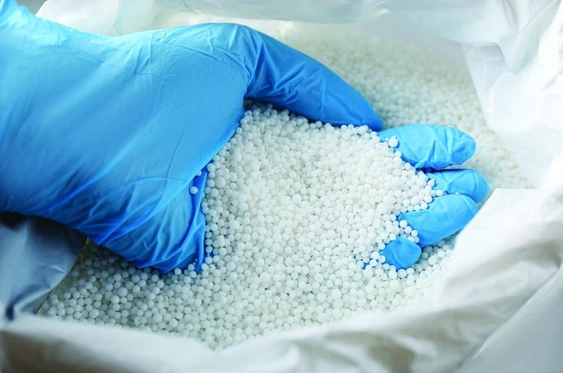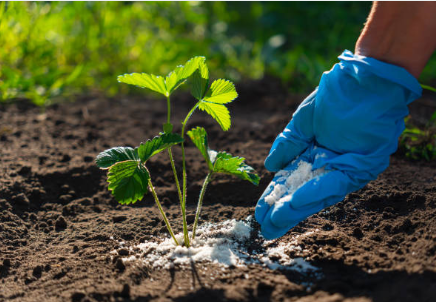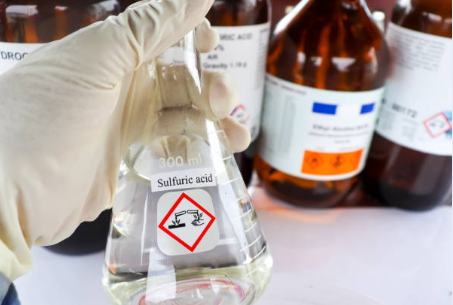
Exhibition time: 17-19 March, 2026 Shanghai, China
 中文
中文

Exhibition time: 17-19 March, 2026 Shanghai, China
 中文
中文

The global fertilizer picture is showing a mixed bag this spring, while struggling to keep pace with volatility.
According to a new report written by Deepika Thapliyal, deputy managing editor, Independent Commodity Intelligence Services, world fertilizer prices are varied, with the general sentiment being soft as buyers are cautious almost everywhere.
Urea, nitrates, phosphates and potash prices are lower compared to a year ago. Ammonia and sulphuric acid levels are higher, and sulphur is largely flat.
Gas prices are not as much of a concern to the market momentarily, but crop prices and adverse weather impacting planting in the United States and Europe are.
Looking at urea, Thapliyal said the recent uptick in prices in Egypt took everyone by surprise.
Levels went up in that region by $24/tonne in just two days as traders rushed in to cover short positions.
The Arab Gulf and Southeast Asia are offering higher, while Iran was able to place 190,000 tonnes of granular urea for June.
New Orleans barge trading turned active tracking the international trend, while Brazilian levels are stable despite concerns about the flooding in that area.
Urea prices are lower compared with a year ago, with Egypt seeing the biggest cut as prices trade 50 per cent below mid-May 2023.
The U.S. is down around 20 per cent, Arab Gulf and Southeast Asia lower by 12 per cent, Iran and the Baltic are down 5-6 per cent and levels in Brazil are flat year-over-year.
India is unlikely to tender in June as local production is up and stocks are close to 10.5 million tonnes.
Ample supply and limited demand is expected to keep urea prices under downward pressure, unless demand resumes in at least one major import hub.

Urea, nitrates, phosphates and potash prices are lower compared to a year ago. Ammonia and sulphuric acid levels are higher, and sulphur is largely flat
By contrast, ammonia prices are up compared to a year ago.
A lack of ammonia in Europe is expected to create some spot demand, while India is expected to see more demand, as well.
Availability is expected to remain tight in June, especially in Trinidad.
Meanwhile, prices for many regions have increased since May 2023. For example, Arab Gulf levels are up $60/tonne since last year.
In the U.S., all eyes will be on the upcoming refilling demand for the near term. However, availability, especially from Trinidad, is expected to remain a worry for buyers.
For nitrates, Thapliyal said prices are under downward pressure. This is in sharp contrast to the trend in May 2023 when producers raised prices.
What has not changed is the buying appetite, which remains lethargic, much like in 2023 when it was impacted by high prices.
Ammonium nitrate (AN) demand in 2024 so far is lower due to inclement weather and significantly cheaper urea.
Appetite for calcium ammonium nitrate (CAN) remained healthy through to the end of May.
Demand for urea ammonium nitrate (UAN) in Europe remains sluggish.
While new prices were announced for AN and CAN, prices of UAN for the new season are still awaited as of press time.
Farmers will assess their nitrate requirements as the season moves forward.
Production in most of Europe is said to be comfortable, Thapliyal said.
In 2024 so far, UAN demand has been lacklustre despite prices being lower compared to the same period in 2023.
Global cues for ammonium sulphate (AS) are mixed.
Demand is seen coming from nearly all regions such as Turkey, Brazil, Southeast Asia and Europe.
While in May 2023, demand was weak; demand in 2024 was patchy due to natural disasters in Brazil.
Ammonium sulphate prices have fallen globally when compared to 2023 levels. They were 9-16 per cent lower year-over-year in mid-May.
The European AS industry seems to be in a better position in 2024, Thapliyal said. That’s compared to the same period in 2023.
Last year, it was struggling to liquidate huge inventories that were produced in the fourth quarter of 2022 when input costs were high.
In 2024, the industry has been operating at reduced capacities (on average 45-50 per cent) to prevent excessive inventory build-up.
This strategy is supporting prices.

In the second week of May, prices for diammonium phosphate (DAP) in India held and the trend continued into the first week of June firming up the price.
Meanwhile, price indications out of China have been slightly higher compared to previously.
In the US, DAP and monoammonium phosphate (MAP) barges were sold at New Orleans, with the price for DAP lower.
In Brazil, product from Russia and China is still on offer, although no significant business has taken place.
The impact of devastating floods in the south of Brazil is still being assessed.
For sulphur, a lack of demand from China and a continuation of high inventories at the major ports have left international buyers and sellers in limbo.
As a result, benchmark cost and freight price levels have been moving sideways or trimmed down.
China is well supplied at a time when demand for phosphates production is seasonally null and void.
Availability in Europe continues to impact downstream production and the situation is not expected to be resolved any time soon, said Thapliyal.
The Mediterranean is seeing some downward price pressure and sellers are expecting this trend to continue
Brazil experienced quite a drop in import levels during the first four months of 2024.
Canadian suppliers are worried about potential strikes at the country’s railways and ports. Even though there were temporary delays, pushing matters out to the end of May, this has done little to alleviate suppliers’ worries.
Global trade in muriate of potash (MOP) has been sluggish throughout much of 2024 and Thapliyal said there are two main reasons for this.
The first is the continued lack of an agreement for India’s first six-month MOP import contract. And the second is the fact that China is showing no interest in signing anything.
All in all it has left the market somewhat directionless.
Aside from China and India, much of the world’s MOP producers are confident supply stability will continue to improve this year as Belarus and Russia up exports to international destinations.
Demand is similarly expected to remain stable-to-firm, leading to an overall balanced outlook.
That said, if and when an agreement is finalised for China or India, pricing will likely move to follow the trend, Thapliyal said.

In Northwest Europe domestic sulphuric acid demand is steady, although buyers’ enquiries have slowed, as the reality of a continued shortage of spot acid has become the norm.
Sulphuric acid offer pricing in the Chinese domestic market has extended recent declines on weak downstream demand.
Downstream phosphate fertilizer producers are running at a low rate as off-season continues; restricting phosphate production in a bid to preserve price stability for export offers.
If export prices drop, plant run-rates will have to be slashed again and further dampening demand for acid.
Export prices for Chinese acid are expected to decline.
Looking to Japan and South Korea, export availability was balanced-to-tight in the short/medium term.
South Korean producers are sold out on export tonnes until July, while Japanese producers’ availability is tight in May and into June.
From:Age Dispatch